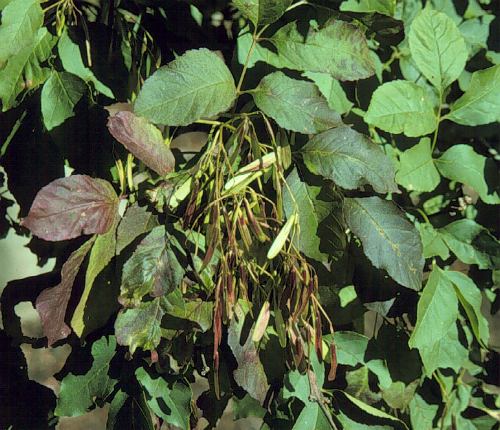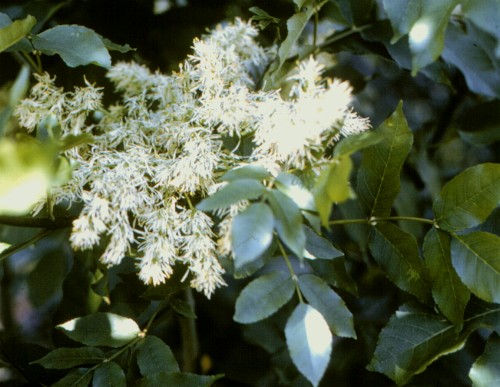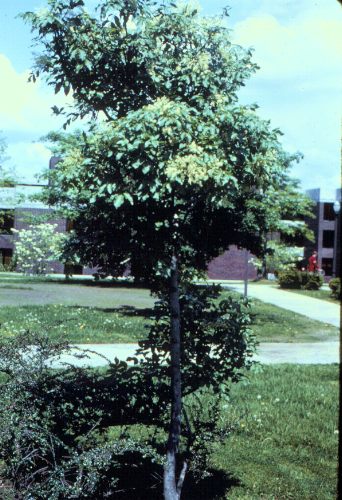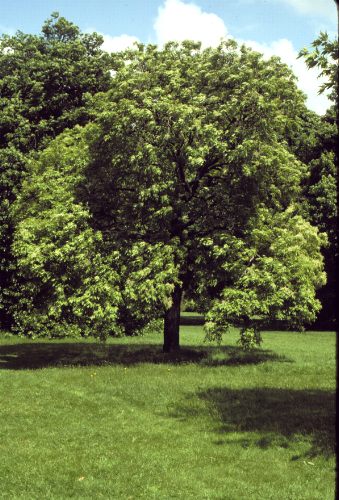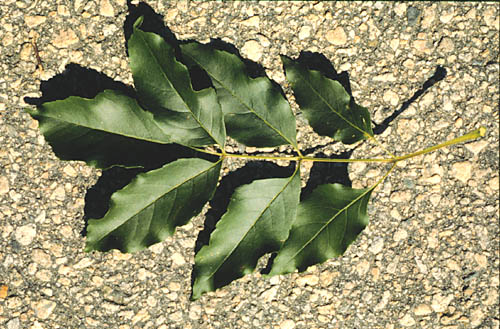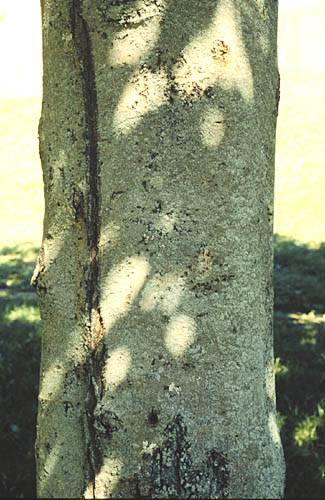Fraxinus ornus
Flowering Ash, Manna Ash
Oleaceae
ExpandHabitat
- native to Europe
- hardy to zone 5
Habit and Form
- a medium-sized, deciduous tree
- 40' to 50' tall
- 25' to 35' wide
- rounded, dense crown
- upright
- multistemmed
- medium texture
- moderate growth rate
Summer Foliage
- opposite leaf arrangement
- leaflets are 3" long with serrated margins
- leaflets have a lanceolate leaf shape
- dark green leaf color
- 5 to 9 leaflets
- pubescent on midrib
Autumn Foliage
- yellowish fall color
- showy
Flowers
- white flowers
- blooms in spring
- showy
- fragrant
- borne in 0.5' long panicles
Fruit
- female plants produce samaras
- large numbers of fruit can be produced
- samaras are 1" to 2" long and narrow
- some describe them as paddle-shaped
- color changes from green to tan as they mature
- persist
- not ornamentally important
Bark
- grayish brown stout stems
- smooth
- gray older bark
Culture
- full sun
- prefers moist, deep, fertile soils for best growth
- quite soil adaptable
- soil pH is not critical
- easily transplanted and established
- tolerant of poorly-drained soils
Landscape Use
- male plants are preferred for landscape purposes
- lawn tree
- shade tree
- street tree
- difficult growing sites
- excellent for parks and campuses
- wood is used for baseball bats
Liabilities
- female trees produce lots of seed, leading to numerous unwanted seedlings
- ash dieback (mycoplasma)
- ash borers
- ash flower galls (male plants) caused by a mite
- ash yellows
ID Features
- opposite leaves
- pinnately compound leaves
- female plants with paddle-shaped samaras
- pubescent, gray-brown buds
- twigs gray and buds brown
- twigs stout
Propagation
- by bud grafting
- by seed
Cultivars/Varieties
'Rotundafolia' - Smaller overall tree compared to species.
